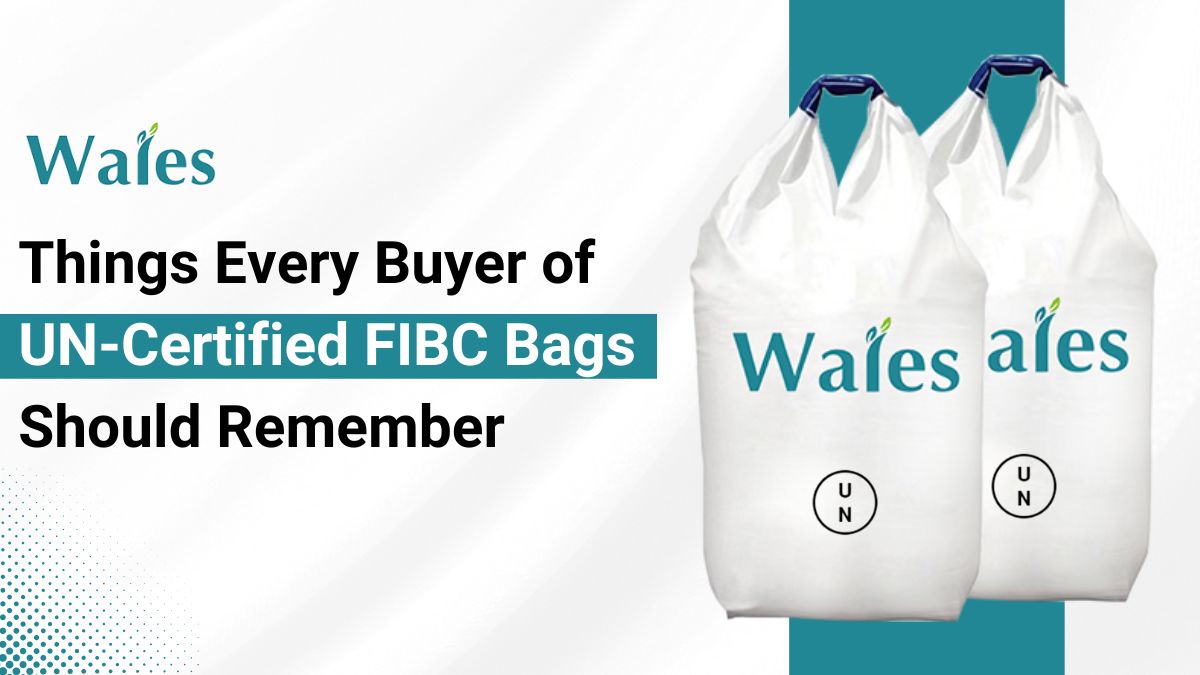Things Every Buyer of UN-Certified FIBC Bags Should Remember

In the intricate world of transporting hazardous materials, ensuring safety and compliance is paramount. One of the key components in this process is the use of UN-Certified FIBC bags. These specialized bags are engineered to withstand the challenges associated with transporting hazardous substances while adhering to strict international standards. However, for buyers navigating this terrain, there are several crucial considerations to keep in mind. From understanding UN regulations to selecting the right supplier, here’s a comprehensive guide to help buyers make informed decisions when purchasing UN-certified FIBC bags.
Understanding UN Regulations
A comprehensive framework for the safe transportation of hazardous chemicals has been designed by the United Nations (UN). Regulations controlling the development, testing, and certification of packaging for hazardous materials are part of this framework. These guidelines must be followed by UN-certified FIBC bags in order to guarantee the safe handling and transportation of hazardous items. To ensure compliance and reduce potential dangers, buyers should become familiar with the precise standards set by the UN for the packaging and shipping of hazardous commodities.
Understanding Testing Procedures
UN-certified FIBC bags undergo rigorous testing procedures to ensure they meet the required safety standards. These tests evaluate various aspects of the bags’ design and performance, including their strength, durability, and resistance to impact and tearing. Buyers should familiarize themselves with the testing procedures mandated by the UN and ensure that the bags they purchase have undergone thorough testing by accredited laboratories. This includes tests such as the top lift test, drop test, righting test, stacking test, tear test, and topple test, which assess the bags’ ability to withstand various handling and transportation conditions.
Identifying Hazardous Materials
Buyers of UN-certified FIBC bags must accurately identify the hazardous materials they intend to transport or store. Hazardous materials are classified into different categories based on their chemical properties and potential risks. Buyers should classify the materials they handle according to the UN’s Hazardous Materials Identification System (HMIS) and ensure that they select FIBC bags that are suitable for the specific hazards posed by these materials. This includes considering factors such as the material’s toxicity, flammability, reactivity, and environmental impact. Following are the classifications that exist for UN bags:
- Class 4.1: Flammable solids, self-reactive substances, and desensitized explosives
- Class 4.2: Substances liable to spontaneous combustion
- Class 4.3: Substances which, in contact with water, emit flammable gases
- Class 5.1: Oxidizing substances
- Class 5.2: Organic peroxides
- Class 5.3: Toxic substances
- Class 8: Corrosive substances
- Class 9: Miscellaneous dangerous substances and articles
Choosing the Right Type of FIBC Bag
UN-certified FIBC bags come in various types and configurations, each designed for specific applications and hazards. Buyers should carefully evaluate their requirements and select the appropriate type of FIBC bag for their needs. This includes considering factors such as the bag’s capacity, dimensions, construction, and features. For example,
- 13 H1 – PP FIBC uncoated without liner
- 13 H2 – PP FIBC coated without liner
- 13 H3 – PP FIBC uncoated with liner
- 13 H3 – PP FIBC coated with liner
Ensuring Compliance with Regulations
It is imperative to adhere to UN requirements while procuring UN-certified FIBC bags. In order to verify that the bags they buy meet the necessary requirements for the transportation of hazardous chemicals, buyers should make sure the bags are correctly labeled and marked with the UN certification sign. Buyers should also make sure that the bags come with all the paperwork needed to prove compliance with regulations, such as test certificates and safety data sheets. Buyers can reduce the risk of mishaps, environmental harm, and fines related to the shipping of hazardous products by making sure UN standards are followed.
Choosing the Right Supplier
Selecting a reputable supplier is crucial when purchasing UN-certified FIBC bags. Buyers should look for suppliers with a proven track record of quality and reliability in the industry. It’s essential to choose a supplier that adheres to stringent quality control measures and is certified to manufacture UN-approved packaging. Additionally, buyers should consider factors such as the supplier’s experience, reputation, and ability to provide customized solutions to meet their specific needs. By partnering with a trusted supplier like Wales Industries, buyers can ensure they receive high-quality UN-certified FIBC bags that meet their safety and compliance requirements.
Conclusion
A thorough understanding of numerous aspects, such as UN regulations, supplier selection, testing protocols, material classification, bag type selection, and regulatory compliance, is necessary when navigating the world of UN-certified FIBC bags. Through comprehension of these crucial factors and collaborating with reliable vendors, purchasers can guarantee they obtain superior FIBC bags that fulfill their safety and regulatory prerequisites.
With proper planning and due diligence, buyers can confidently transport hazardous materials while minimizing risks and ensuring the safety of workers, the public, and the environment. To explore more about UN Certified FIBC bags visit https://www.walesindustries.com.au/products/fibc-bags/un-certified-fibc or contact us at +611300786560

